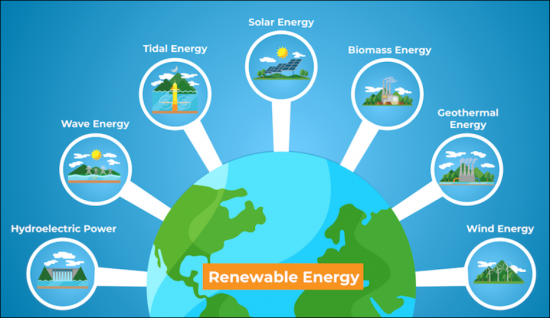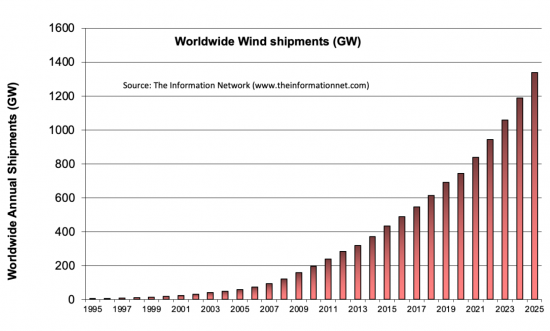PUBLISHER: Information Network | PRODUCT CODE: 1479766

PUBLISHER: Information Network | PRODUCT CODE: 1479766
Semiconductors for Alternative Energy Technologies: Opportunities and Markets
The "Semiconductors for Alternative Energy Technologies: Opportunities and Markets" report is a comprehensive resource for understanding the critical intersection of semiconductor technology and renewable energy. It offers a roadmap for navigating the future of energy, highlighting the transformative potential of semiconductors to power a more sustainable world.
Semiconductors, the bedrock of modern electronics, are poised to play a similarly transformative role in alternative energy technologies. Their unique properties and capabilities enable the development and optimization of efficient, reliable, and cost-effective solutions for harnessing, storing, and utilizing renewable energy. From solar panels and wind turbines to electric vehicles (EVs) and smart grids, semiconductors are at the heart of innovations that promise to reshape our energy infrastructure.
The imperative for alternative energy technologies stems from the global consensus on reducing carbon emissions and mitigating the effects of climate change. Renewable energy sources such as solar, wind, hydro, and geothermal have become increasingly vital in the global energy mix, necessitating advanced technologies that can harness, convert, and store energy more efficiently and reliably.
Semiconductors, with their inherent properties of electrical conductivity and control, stand at the forefront of this technological revolution, enabling the development of smarter, more efficient energy systems and devices.

Trends
One of the primary trends outlined in the report is the accelerating shift from fossil fuels to renewable energy sources such as solar, wind, hydro, and geothermal power. This transition is driven by the decreasing cost of renewable energy technologies, enhanced by advancements in efficiency and accessibility. The report underscores the increasing competitiveness of solar photovoltaic (PV) systems and wind turbines, which are becoming more cost-effective than traditional coal or gas-fired power plants in many regions around the globe.
Another significant trend is the growing emphasis on energy storage technologies. As the penetration of renewable energy in the power grid increases, the demand for efficient storage solutions to address intermittency issues and ensure a reliable energy supply is highlighted. The report examines various energy storage technologies, including batteries, pumped hydro storage, community nuclear storate, and geothermal energy, discussing their roles in enabling a smoother integration of renewable sources into the energy mix.
The electrification of transportation emerges as a crucial trend, with electric vehicles (EVs) gaining momentum as a viable alternative to internal combustion engine vehicles. The report explores the implications of this shift for the energy sector, including the increased demand for electricity and the need for advanced charging infrastructure. It also discusses the potential for EVs to act as mobile energy storage units, further integrating the transportation and energy sectors.
About This Report
This report delves into the various segments of the alternative energy market, examining how semiconductor technologies are being applied to advance renewable energy sources. It discusses the pivotal role of semiconductors in photovoltaic cells for solar power, power electronics for wind energy conversion, and batteries and charging infrastructure for electric mobility. Additionally, it covers the significance of semiconductors in emerging areas such as energy harvesting, which encompasses technologies that capture and convert ambient energies into usable electrical energy.
Beyond the technical aspects, the report also addresses the market dynamics shaping the semiconductor industry's involvement in alternative energy. It analyses trends in investment, research and development efforts, and regulatory environments across different geographies. The analysis includes a look at the competitive landscape, identifying key players and innovators driving the integration of semiconductor technologies into renewable energy solutions.

In essence, the "Semiconductors for Alternative Energy Technologies: Opportunities and Markets" report serves as a comprehensive resource for those vested in the future of energy. It underscores the indispensable role of semiconductors in facilitating the transition towards more sustainable, efficient, and innovative energy solutions. Through detailed market insights, technological reviews, and strategic advice, the report charts a course for stakeholders aiming to navigate the evolving landscape of alternative energy technologies, driving the global shift towards a more sustainable and energy-efficient future.
Table of Contents
Chapter 1. Introduction
Chapter 2. Solar Energy
- 2.1. Solar Infrastructure
- 2.1.1. Current developments
- 2.1.2. Worldwide installed photovoltaic totals
- 2.1.3. Applications of PV
- 2.1.3.1. PV Power Stations
- 2.1.3.2. PV in Buildings
- 2.1.3.3. PV in Transport
- 2.1.3.4. PV in Standalone Devices
- 2.1.3.5. Rural Electrification
- 2.1.3.6. Solar Roadways
- 2.1.4. Economics of PV
- 2.1.4.1. Power Costs
- 2.1.4.2. Grid Parity
- 2.1.4.3. Financial Incentives
- 2.1.5. Solar Forecast
- 2.2. Semiconductor Technology
- 2.2.1. Inverter/Converter Devices
- 2.2.2. Inverter Analysis
- 2.2.3. Inverter Pricing
Chapter 3. Wind Energy
- 3.1. Wind Energy Infrastructure
- 3.1.1. Electricity Generation
- 3.1.1.1. Grid Management System
- 3.1.1.2. Capacity Factor
- 3.1.2. Turbine Placement
- 3.1.3. Offshore Wind Farms
- 3.1.4. Utilization Of Wind Power
- 3.1.5. Economics And Feasibility
- 3.1.5.1. Growth And Cost Trends
- 3.1.5.2. Theoretical Potential
- 3.1.5.3. Direct Costs
- 3.1.5.4. External Costs
- 3.1.5.5. Incentives
- 3.1.1. Electricity Generation
- 3.2. Semiconductor Technology
- 3.2.1. Key Component Semiconductor Devices
- 3.2.2. Semiconductor Analysis
Chapter 4. Fuel Cells
- 4.1. Fuel Cell Infrastructure
- 4.1.1. Fuel Cell Design
- 4.1.2. History
- 4.1.3. Types of fuel cells
- 4.1.3.1. Polymer Electrolyte Membrane
- 4.1.3.2. Phosphoric Acid
- 4.1.3.3. Direct Methanol
- 4.1.3.4. Alkaline
- 4.1.3.6. Molten Carbonate
- 4.1.3.7. Solid Oxide
- 4.1.3.8. Proton Exchange Fuel Cells
- 4.1.3.9. Regenerative (Reversible) Fuel Cells
- 4.1.4. Efficiency
- 4.1.4.1. Fuel cell efficiency
- 4.1.4.2. In practice
- 4.1.5. Fuel cell applications
- 4.1.5.1. Applications
- 4.1.5.2. Hydrogen Transportation And Refueling
- 4.1.6. Fuel Cell Manufacturers
- 4.2. Semiconductor Technology
- 4.2.1. Key Component Semiconductor Devices
Chapter 5. Storage/Electric Vehicle Technology
- 5.1. Storage/Electric Vehicle Infrastructure
- 5.1.1. Usage And Applications
- 5.1.2. Charging And Discharging
- 5.1.3. Active Components
- 5.1.3.1. Common Rechargeable Battery Types
- 5.1.3.2. Less Common Types
- 5.1.4. Recent Developments
- 5.1.5. Batteries for Electric Vehicles
- 5.1.5.1. NiMH Batteries
- 5.1.5.2. EV Li-Ion Rechargeable Batteries
- 5.1.6. Vehicle Charging
- 5.1.6.1. Grid Impacts
- 5.1.6.2. Communication
- 5.2. Forecasts
- 5.2.1. HEV/EV Forecast
- 5.2.2. Key Component Semiconductor Devices - HEV/EV
- 5.2.3. ADAS (Advanced Driver-Assistance Systems)
LIST OF TABLES
- 2.1. Total Photovoltaic Peak Power Capacity By Country
- 2.2. World's Largest Photovoltaic Power Plants
- 2.3. PV Inverter Market Distribution
- 2.4. Solar Inverter Market Analysis
- 3.1. Operational Offshore Wind Farms
- 3.2. Offshore Wind Farms Under Construction
- 3.3. Installed Windpower Capacity (MW)
- 3.4. Annual Wind Power Generation (TWh)
- 3.5. U.S. Installed Capacity (Megawatts)
- 4.1. Fuel Cell Comparisons
- 4.2. Fuel Cell Details
- 4.3. Worldwide Fuel Cell Shipments By Type
- 5.1. Rechargeable Battery Technologies
- 5.2 10-Year Costs For Electric Vehicle Batteries
- 5.3. Breakeven Costs For EV Batteries - 40 Mile Range
- 5.4. Breakeven Costs For EV Batteries - 100 Mile Range
- 5.5. Summary Table Of Future Batteries
- 5.6. Types Of Charging Stations
- 5.7. Typical Charging Times By Power Level And Electric Vehicle
- 5.8. Forecast Of Global Sales Of HEVs And EVs
- 5.9. BOM Cost Breakdown-Tesla Model 3, VW ID.3 and VW Golf
- 5.10. ADAS System Key IC Components And Suppliers
- 5.11. Automotive Semiconductor By Application
LIST OF FIGURES
- 2.1. Flat Plate Solar Collector
- 2.2. Parabolic Trough Solar Collector
- 2.3. Solar Dish/Engine Collector
- 2.4. Solar Power Tower Collector
- 2.5. Global Solar PV Module Forecast
- 3.1. Evolution Of U.S. Commercial Wind Technology
- 3.2. U.S. Installed Capacity (Megawatts)
- 3.3. Worldwide Wind Turbine Shipments
- 3.4. Wind Power As Percent Of Electricity
- 4.1. Polymer Electrolyte Membrane (PEM) Fuel Cell
- 4.2. Phosphoric Acid Fuel Cell (PAFC) Fuel Cell
- 4.3. Alkaline (AFC) Fuel Cell
- 4.4. Molten Carbonate (MCFC) Fuel Cell
- 4.5. Solid Oxide (SOFC) Fuel Cell
- 4.6. Proton Exchange Fuel Cell
- 4.7. Transition To A Hydrogen Economy
- 4.8. Hydrogen Reformer Fueling Station
- 4.9. Diversified Fuel Cell Development
- 5.1. Mass And Volume Energy Densities Of Secondary Cells
- 5.2. Battery Capacity For An Electric Vehicle
- 5.3. Battery Price With Time
- 5.4. Cathode Material Cost
- 5.5. Target For Li-Ion Rechargeable Batteries
- 5.6. Diverse Range Of Candidates For Cathodes
- 5.7. Improving Cathode Materials
- 5.8. Comparison Between A Conventional And All-Solid-State LiB
- 5.9. Comparison Between A Conventional And Metal Polysulfide LiB
- 5.10. EV Communications Control System Overview
- 5.11. Forecast of Global Sales of HEVs and EVs
- 5.18. Circuit Diagram For Level 3 Charger
- 5.19. Revenue Forecast For Semiconductors For HEV/EV Chargers




